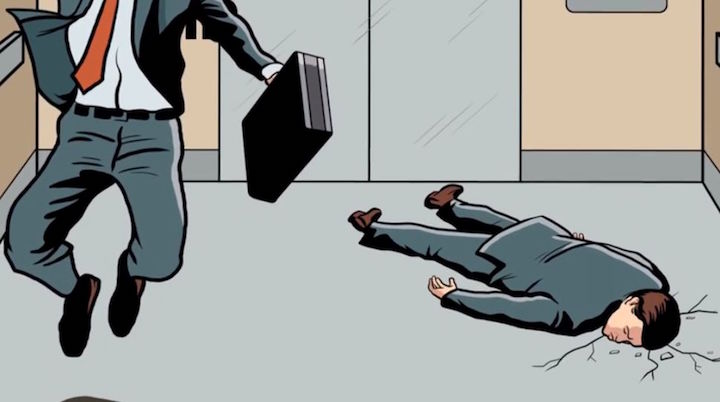Given the recent accident with the PBCom service elevator, I’m sure this is a question weighing on everyone’s minds. After all, a falling elevator is a common phobia that most people share — which thriller movies have only capitalized on and made worse, thank you very much. So you’ll be happy to know that statisticians actually cite taking the stairs as more dangerous than taking the lift.
(This Student Was Trapped in an Elevator for 5 Hours, Used Time to Finish Homework)
But in the event that elevators do end up malfunctioning badly, let’s consider what the chances of survival are and what you should do in that situation.
The first thing to take into consideration is that an elevator crash more likely means one or two cables snapping or the safety breaks failing rather than an all-out free-fall. Elevators are designed with so many safety features that an elevator free-fall is more common in movies than in real life. The only account I could find of a total crash was of an elevator in the Empire State Building whose cables snapped due to a fire… and the person inside the elevator survived.
To put your mind at ease, let’s go through some of the basic safety features that the typical elevator should have. The first is 2 different kinds of breaks: motor brakes which jam the cables if the power goes off, and car brakes which detect if the lift is moving too fast. So if the motor stops working for any reason, at least one of these mechanisms will stop the car from just falling.
If all of the breaks just happen to fail at the same time (which is highly unlikely), then the lift’s counterweights should be able to minimize the harm. These are weights placed on the other side of the metal cable in order to balance the counterweight. They’re essentially a failsafe to slow down the acceleration of the elevator.
Lastly, in terms of cables, an elevator usually has 8 cables each although this can vary. Each cable is supposed to be able to hold the weight of a full car or more. Of course, this is more applicable to elevators in high-rise buildings, condominiums, or commercial centers. Elevators in construction sites are much less secure which leads to more accidents.
So what this all means is that there are good chances of survival in an elevator crash, but only because there are so many safety nets which minimize the impact of a crash. Even in the example of the PBCom crash, the elevator is said to have stopped at every floor before coming to a full stop.
In the very worst case that the cables snap and the breaks fail and you’re in some Final Destination scenario — can you survive an elevator free-fall? The answer is still yes. Obviously, the chances of survival here are much lower, but not impossible. In fact, the Guinness World Record for Longest Fall Survived in an Elevator is measured at 75 stories or around 1,000 feet.
Do note that, contrary to popular belief, jumping before a falling elevator makes impact will not improve your chances of living. You’re more likely to miscalculate the timing of the jump, or not put enough force into the jump, and just make it more dangerous for yourself. Engineers say that your best chance of survival in a free-falling elevator is to lie as flat as possible on the floor so that the force of impact is better distributed.
(LOOK: Scary escalator gap could have caused accidents)
Of course, this all relies on the assumption that elevators are being well-maintained and regulated. Several netizens have already expressed doubt about safety regulations in the Philippines. What do you think?
Sources: NY Times, HowStuffWorks







